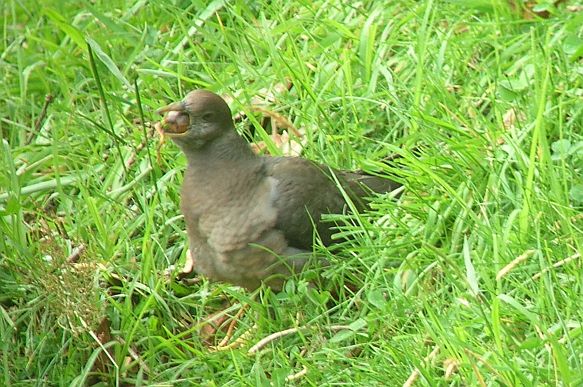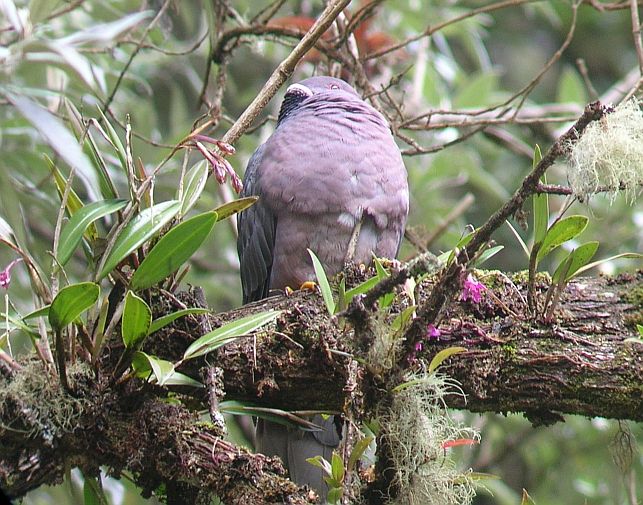Birding opens the door to an endlessly interesting range of experiences. When you go birding, by definition, the focus is on the birds but since watching birds always involves much more than seeing them, the experience of birding entails far more than birdwatching.
For example, birding can be as mundane as meditating on the goldfinches that come to the feeder out back or as vigorous as making an Olympic grade sprint for a better view of a rare seabird. It can be rocking trips on the rolling blue waters of the open ocean, sharing priceless times with favorite peeps, and exploring new places and countries where you end up eating a Cavy (Guinea Pig) in the Andes.
When you find yourself chewing on that tough rodent meat in Cuzco, you may wonder how on Earth you got there, how on Earth did you end up eating the same species of animal as your eighth grade pet. “Birding” is the simple answer and it will also be the same answer when, after partaking in that meal of rodent, you wonder why you traveled to a place where climbing the stairs makes you feel around 20 or 30 years older. But if you wonder why you are short of breath, your answer won’t exactly be “birding”, it will be “where the heck is the oxygen?” or “high elevation”.
Since birds live almost everywhere, in Costa Rica, we don’t just find birds in the hot, humid rainforests of the lowlands. We also find them at the very tops of the mountains that form the country’s backbone and as one might expect, some of the ones that live way up there, only live way up there. This of course means that if you want to see them (and of course we all do!), you gotta head way up into the mountains.

Mountains, with the slopes of scree, sheer cliffs, ice, and other generally inhospitable facets, aren’t always the easiest of places to visit. I guess it’s why some people feel the need to climb them (a friend of mine does that, I bet he has trudged past vivid blue Grandalas in the Himalayas). In Costa Rica, much to the fortune of birders who would rather not do the climbing thing, we have a nice high mountain (technically a volcano) where you can drive right on up to 11,000 feet! That accessible high elevation birdy spot is Volcan Irazu, here are some expectations and highlights:
Fine High Elevation Birding
Get up above 2,000 meters and roadside birding offers a fine range of montane species. Check out the weirdly wonderful Long-tailed and Black-and-Yellow Silky-Flycatchers, the easily identifiable Black-capped Flycatcher, clown antics of Acorn Woodpeckers, and views of many a Band-tailed Pigeon in flight.

Spot-crowned Woodcreepers and Collared Redstarts sing from the trees, and Sooty-capped Chlorospinguses rustle the leaves with several more highland endemics in tow. Fiery-throated Hummingbirds are the norm and are joined by Talamanca Hummingbird, Lesser Violetear, and Volcano Hummingbird. Keep an eye out for fruiting trees and you might find a quetzal (they are regular up on Irazu), Buffy-crowned Wood-Partridges haunt the brush, and the tooting vocalization of Costa Rican Pygmy-Owl may give away its position.

Keep on birding and you might even get lucky with one of the toughest widespread birds in the Neotropical region, the Maroon-chested Ground-Dove. A fair number seem to live on Irazu but they probably escape detection because they tend to be shy and rarely come into the open.
Potato Fields and Forest Patches

Being a volcano, Irazu has rich dark soils that have been used to grow crops for centuries. As you ascend the volcano, you will drive through several fields of soup ingredients; onions, taters, and carrots. These are dotted here and there with remnants of high elevation oak forest, unsurprisingly, the largest patches tend to have the best birding.

Forest patch birding is generally restricted to the roadside but it’s still good, just be careful how you park your car. For the best forest access, see the Nochebuena bit below.
MODOs in Costa Rica
As in Mourning Doves. I know, not exciting but since this North American suburban standby is very localized in Costa Rica, we get a kick out of seeing and hearing so many of them when ascending Irazu. It’s also a reminder that yes, that bird that sounds like a MODO while you watch a Fiery-throated Hummingbird is definitely a Dove a la Mourning.
The Highest of the High Elevation Birds
In Costa Rica, while more species live in the lower, more tropical elevations, there are a few special birds that managed to become adapted to the highest points in the nation. Two of them even became more or less restricted to the brushy treeline habitats that occur on Irazu, Turrialba, and the high Talamancas. This pair of birds of dramatic surroundings are the Volcano Junco and the Timberline Wren.

On Irazu, the wren can occur down to the Nochebuena area but the junco usually requires a drive right on up to the paramo at the edge of the national park. Once you arrive, don’t expect to see them right away. If it’s sunny, it might take especially long for them to appear. However, if you bird that paramo in the cold early morning, you will have good chance of connecting.

The wrens are fairly common but skulky. In keeping with typical wren fashion, they often give a fastidious call. The juncos aren’t as common as one might expect. They seem to occur in low density populations but unlike the wren, they aren’t the least bit shy about singing from the tops of bushes or hopping next to the car.
The Nochebuena Trails and Restaurant
This classic site is a must for any birding visit to Irazu. Even if you don’t feel like walking their trails (some of them uphill and with less oxygen than you are might be used to), it’s still worth visiting the small and friendly diner for a coffee and pecan pie or some other tasty home-cooked cuisine. While eating, you will probably be entertained by views of 4 species of hummingbirds, flyby Acorn Woodpeckers, Flame-colored Tanagers, and other species.
I hope you do feel like walking the trails though; it’s a beautiful hike. Take your time, be ready for some mud, and explore for wood-partridges, the pygmy-owl, and many other species. Listen carefully and keep a close eye out for the ground-dove, this is the best place to find it! After the trail passes through the fields, it eventually enters forest with a lot of bamboo. Timberline Wren is present along with nice mixed flocks of expected species as well as chances at the rare Slaty Finch and Peg-billed Finches.

The high elevation birding experience also has its other charms, not the least of which are the fantastic views.

A morning of birding Irazu is a good way to get an easy fix of high elevation birds and makes for a good birding day trip from the San Jose area. If you stay until dark, you can also look for nocturnal species including the Unspotted Saw-whet Owl. Whether just birding during the day or into the night, be prepared for very cool and rainy weather. If staying for the night, contact the Nochebuena, they also have a cabin that can be rented.
















